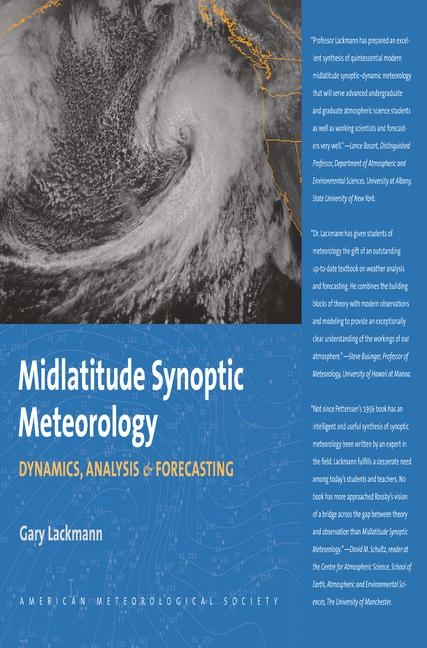
Midlatitude Synoptic Meteorology – Dynamics, Analysis, and Forecasting
Seiten
2021
American Meteorological Society (Verlag)
978-1-878220-10-3 (ISBN)
American Meteorological Society (Verlag)
978-1-878220-10-3 (ISBN)
Covers synoptic-dynamic meteorology, synoptically driven mesoscale phenomena, weather forecasting, and numerical weather prediction, and links theoretical concepts to modern technology and facilitates the meaningful application of concepts, theories, and techniques using real data.
The past decade has been characterized by remarkable advances in meteorological observation, computing techniques, and data-visualization technology. However, the benefit of these advances can only be fully realized with the introduction of a systematic, applied approach to meteorological education that allows well-established theoretical concepts to be applied to modernized observational and numerical datasets. This textbook, which covers synoptic-dynamic meteorology, synoptically driven mesoscale phenomena, weather forecasting, and numerical weather prediction, links theoretical concepts to modern technology and facilitates the meaningful application of concepts, theories, and techniques using real data. As such, it will both serve those planning careers in meteorological research and weather prediction and provide a template for the application of modern technology in a classroom and laboratory setting.
The past decade has been characterized by remarkable advances in meteorological observation, computing techniques, and data-visualization technology. However, the benefit of these advances can only be fully realized with the introduction of a systematic, applied approach to meteorological education that allows well-established theoretical concepts to be applied to modernized observational and numerical datasets. This textbook, which covers synoptic-dynamic meteorology, synoptically driven mesoscale phenomena, weather forecasting, and numerical weather prediction, links theoretical concepts to modern technology and facilitates the meaningful application of concepts, theories, and techniques using real data. As such, it will both serve those planning careers in meteorological research and weather prediction and provide a template for the application of modern technology in a classroom and laboratory setting.
Gary Lackmann is professor of atmospheric sciences in the Department of Marine, Earth, and Atmospheric Sciences at North Carolina State University.
| Erscheint lt. Verlag | 10.9.2021 |
|---|---|
| Verlagsort | Boston |
| Sprache | englisch |
| Maße | 227 x 252 mm |
| Gewicht | 896 g |
| Themenwelt | Naturwissenschaften ► Geowissenschaften ► Geologie |
| Naturwissenschaften ► Geowissenschaften ► Meteorologie / Klimatologie | |
| ISBN-10 | 1-878220-10-1 / 1878220101 |
| ISBN-13 | 978-1-878220-10-3 / 9781878220103 |
| Zustand | Neuware |
| Haben Sie eine Frage zum Produkt? |
Mehr entdecken
aus dem Bereich
aus dem Bereich


